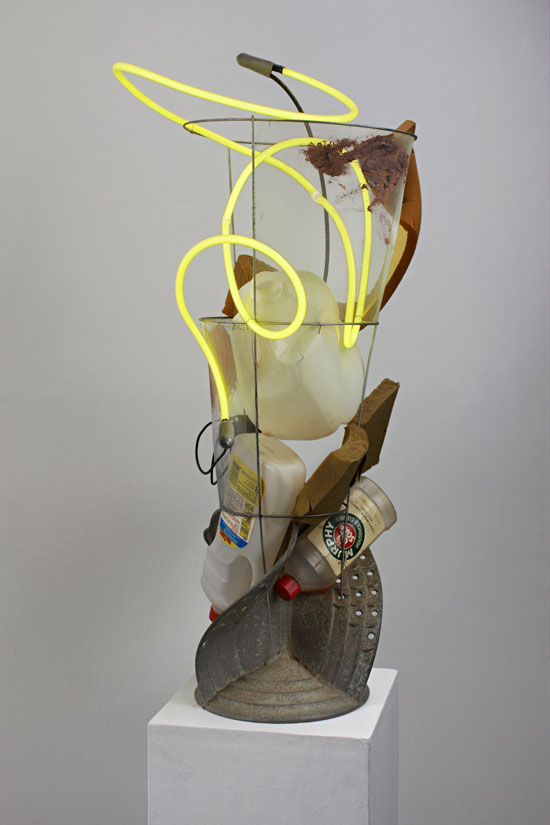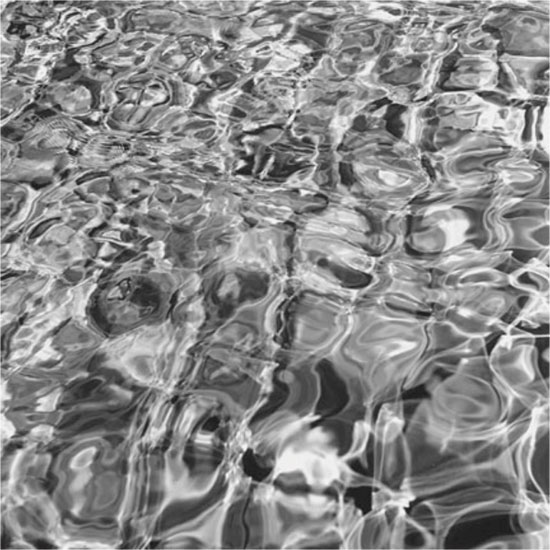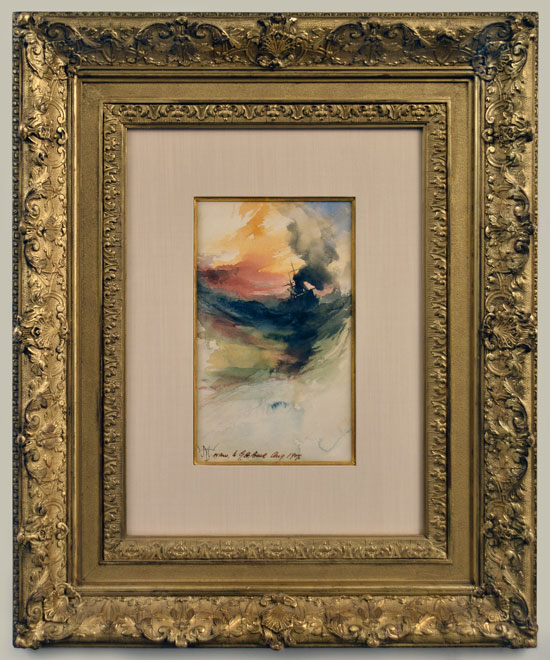When Greek philosophers quit trying to explain the world by storytelling, as in mythology, they explained it instead as water. In the 6th century BCE, Thales of Miletus believed all material was actually water, which in his experience could be found in all three forms: solid, liquid, and gas. The ground floated on an ocean and earthquakes were simply waves going by.
Heraclitus puzzled how a stream could hold its shape even as new water went by, turning that insight into his Logos, or word, a controlling law for matter. Anaximander eclipsed Darwin by 25 centuries, speculating that earth creatures had probably started as water creatures. As they dried out a bit, he suggested, they were able to live on land.
Since these thinkers are still being read today, and the issues outlined are similar to the ones studied now, they were not, as the Brits say, all wet.
That artists paint, sculpt and photograph water comes as no surprise, as H2O is the primary molecule of our existence. What is a puzzle is how rarely it is used as an exhibition theme. In 1998, the Parrish Art Museum in Southampton offered “Sea Change” as part of its 100th anniversary, but a search for others yielded a sparse catch. Thankfully, Southampton’s Tripoli Gallery is now updating “Sea Change” with an intriguing show entitled “Water.”
“Water” is a sizeable group show that focuses on artists of the East End of Long Island, with works whose creation dates span 150 years. Water is admired in placid seascapes, fearsome in storms, bottled as a pop object, sculpted as minimalist tableau, and photographed for its shifting shadows. Objects tossed up by the waters, meanwhile, are collected and assembled into a drifting memory.
Painter Darius Yektai portrays the seminal experience of bathing, an image frequented in visual art as a figure study—everyone bathes in the buff after all—and seen as a theme in the work of Paul Cezanne and Pierre Auguste Renoir. In Yektai’s “The Shower,” the vulnerable figure is vaguely in the woods but definitely drenched by a concerted stream of water rendered perfectly by simple paint drippings. This is a profound and effective image that wanders in and out of abstraction.
.

"The Shower" by Darius Yektai, 2008. Oil and gesso on canvas and board, 41 3/4 x 31 1/2 inches.
.
At the other end of the visual arts spectrum from Yektai’s romanticism is a multi-generational dada joke by Yung Jake. Duchamp started it by exhibiting a pair of found perfume bottles “Belle Haleine eau de Voilette”; Jasper Johns brought it up to date with a cast pair of Ballantine beer cans dubbed “Ale”; and now Jake gets on board at Tripoli with similarly sized containers of Fiji water.
Jake adds a twist giving the piece a title known only by graphic “emotis.” Both the “eau de Voilette” and Ballantine ale cans delineated a certain class of consumer and so does Fiji, as it appears here and there in rap lyrics as a metonym for gentrification or high living. And so the liquid dada sendup continues from generation to generation.
.

“emotis” by Yung Jake, 2013. Mixed media, 7 3/4 x 25 x 3 1/2 inches.
.
Keith Sonnier struts his stuff with the coolest piece in the show, “Los La Butte” (Tidewater series, 1994), comprised of items belched up by the sea wrapped with his trademark neon tube. It is at once an obscenity of detritus that ruins an evening walk on the seashore, a crossover from pop imagery with a neon tube, and the dark reflections of discarded objects, as seen in Joseph Beuys and others.
.

"Los La Butte (Tidewater Series)" by Keith Sonnier, 1994. Mixed media, neon, and found objects, 35 x 17 x 21 inches. Courtesy of the artist.
.
Photographer Clifford Ross exhibits a couple of compelling shots of water in a swimming pool or a pond shallow. Bright blinding sun shimmers into the lens in a geometric pattern both familiar and mysterious as to the source of this consistency. It functions as an artwork should, making viewers reconsider the commonplace. This pattern is repeated nearby in May Lin’s crystal sculpture of a pond surface.
.

"Water XIX" by Clifford Ross, 1998. Silver gelatin print on paper, 24 x 20 inches. Edition 5/9.
.
Included in the show is a 1907 Thomas Moran painting of a square-rigged whaling ship rolling the waves, sketched somewhat in the style of J.M.W. Turner. Its signature black plume coils above as whalers render oil from blubber in large vats called “try pots,” the reduced cargo allowing them to remain at sea longer.
Moran’s paintings tended to have an anchoring horizontal feature—a rock outcrop, for example, or the horizon itself—around which movement would occur, but not in this painting, which swirls and pitches without any apparent geometry. Moran was of the Hudson River School and gained a reputation as a superb colorist, a skill that shows in this beautiful painting.
.

"Smoking Ships at Sea" by Thomas Moran, 1907. Watercolor and pencil on paper, 23 1/2 x 19 1/2 inches. Private Collection. Courtesy of Tripoli Gallery.
.
The show features other water themed works by Ross Bleckner, Stefan Bondell, William Merritt Chase, Willem de Kooning, James de Pasquale, Marsden Hartley, Mary Heilmann, Roy Lichtenstein, Matisse Patterson, Fairfield Porter, Clifford Ross, Lola Montes Schnabel, Nathalie Shepard, Saul Steinberg, and Billy Sullivan.
Noted curator Klaus Kertess contributed a brief and engaging introduction to “Water.” A percentage of proceeds from this exhibition will support WHOLE WORLD Water, an international campaign developed to help end the global water and sanitation crisis.
_______________________________________
BASIC FACTS: "Water" remains on view through Sept. 9, 2013 at Tripoli Gallery, 30A Jobs Lane, Southampton, NY 11968. www.tripoligallery.com. facebook page twitter @tripoligallery
________________________________________
© 2013 Hamptons Art Hub LLC. All rights reserved.
